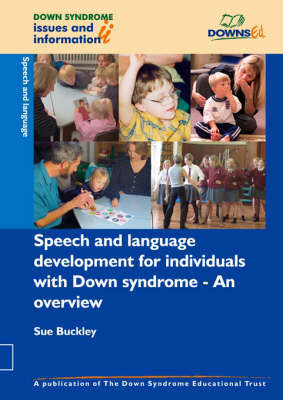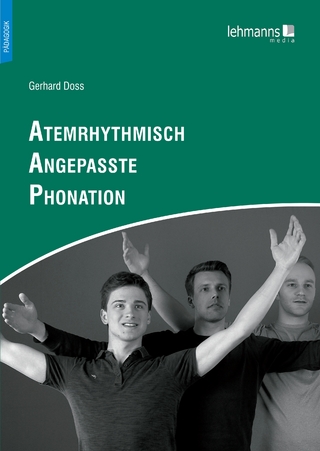
Speech, Language and Communication for Individuals with Down Syndrome - An Overview
Down Syndrome Educational Trust (Verlag)
978-1-903806-00-5 (ISBN)
- Keine Verlagsinformationen verfügbar
- Artikel merken
Children with Down syndrome are usually good communicators. They are keen to interact socially right from infancy but they have to rely on non-verbal skills such as gesture for longer than other children because they usually experience significant speech and language delay. Once they start to talk, they make good use of the speech and language skills that they have for the same range of communicative activities as everyone else, particularly if encouraged to do so by sensitive support from those around them at home, at school and in the community. However, they have specific difficulty with learning grammar and with developing clear speech. Some of the reasons for their difficulties with learning to talk are known and provide pointers to effective intervention strategies. Researchers and practitioners worldwide now agree on the principles for effective intervention. Since speech and language skills are central to the development of mental abilities such as thinking, reasoning and remembering as well as to social inclusion, it is essential that speech and language is a focus for parents, teachers and therapists from infancy through to adult life.
This overview covers development from birth to teenage years, and to understand the speech and language needs of primary and secondary age children, teachers and parents are encouraged to read the whole overview as the children's difficulties have their roots in the preschool years.
Sue Buckley is a psychologist, Emeritus Professor of Developmental Disability in the Psychology Department at the University of Portsmouth, UK and Director of Research and Training at The Down Syndrome Educational Trust. Sue has been actively involved in researching the developmental and educational needs of children with Down syndrome since 1980. She is an internationally recognised authority and has published widely for parents, professionals and researchers. One of Sue's three children, Roberta, is a young adult with Down syndrome. Gillian Bird is a psychologist and Director of Consultancy and Education at The Down Syndrome Educational Trust. Gillian has been working with children with Down syndrome, from birth to teenage years, and their families since 1983. She has developed and supported the successful inclusion of children with Down syndrome in mainstream education since 1988. Gillian has also developed early intervention programmes and been active in research, publishing and training with colleagues.
Contents Introduction The importance of learning to talk Speech and language skills are central to social interaction Being able to talk also underpins the development of mental abilities The skills and knowledge needed for talking Learning to talk is an everyday activity Parents' talk styles influence children's progress Play activities and book reading Learning to talk is a process starting in infancy Becoming an effective communicator Foundations of clear speech Starting intentional communication Lifelong skills Building a vocabulary Comprehension before expression Joint attention More vocabulary new words through life Two word speech Early grammar Later grammar Is there a critical period for learning language? Speech clarity and intelligibility The typical profile of speech and language development for children with Down syndrome Early communication skills Gesture Talking - vocabulary Speech Grammar and sentence structures Slow progress Working memory No absolute ceiling Intelligibility Joining in Familiarity Milestones and individual differences Individual differences Teenagers and adults Autism Dyspraxia Explaining the profile of speech and language development Learning or cognitive difficulties Physical differences Hearing loss Auditory discrimination Working memory Learning language from listening is compromised Speech motor difficulties Learning interactions and opportunities Summary Is intervention for speech and language effective? Teaching word production Teaching two-word production Teaching grammar Phonology Multi-sensory approaches to support learning from listening Signing Teaching reading to teach grammar Conclusion
| Erscheint lt. Verlag | 14.12.2000 |
|---|---|
| Reihe/Serie | Down Syndrome Issues & Information |
| Zusatzinfo | Illustrations (some col.) |
| Verlagsort | Kirkby Lonsdale |
| Sprache | englisch |
| Maße | 210 x 297 mm |
| Gewicht | 172 g |
| Themenwelt | Geisteswissenschaften ► Sprach- / Literaturwissenschaft ► Sprachwissenschaft |
| Medizin / Pharmazie ► Gesundheitsfachberufe ► Logopädie | |
| ISBN-10 | 1-903806-00-3 / 1903806003 |
| ISBN-13 | 978-1-903806-00-5 / 9781903806005 |
| Zustand | Neuware |
| Haben Sie eine Frage zum Produkt? |
aus dem Bereich


